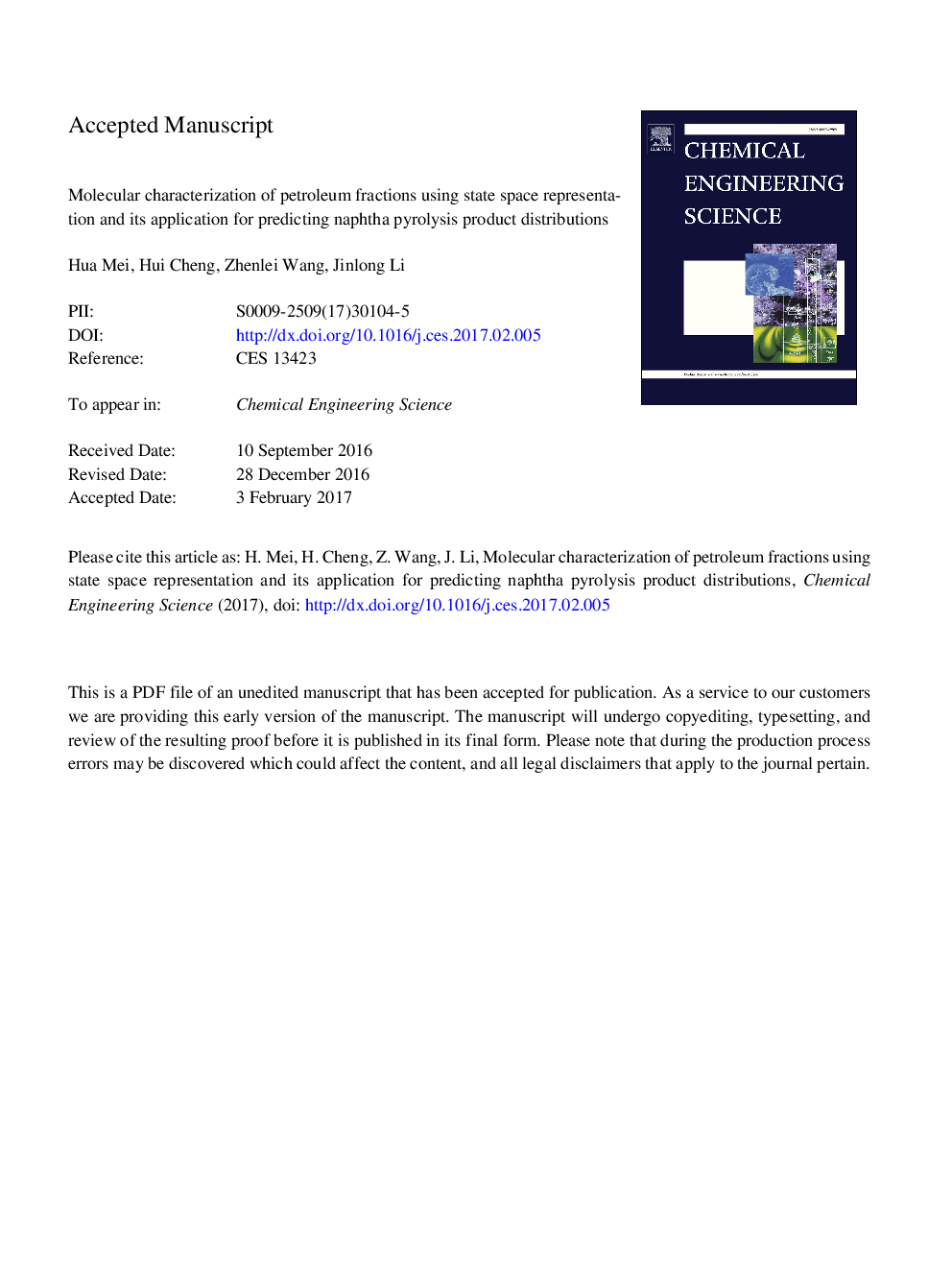| Article ID | Journal | Published Year | Pages | File Type |
|---|---|---|---|---|
| 4763842 | Chemical Engineering Science | 2017 | 31 Pages |
Abstract
Molecular model of petroleum fractions plays an important role in the designing, simulation and optimization for petrochemical processes such as pyrolysis process, catalytic reforming and fluid catalytic cracking (FCC). However, it is very difficult to exactly characterize the composition distributions due to its internal complexity and containing numerous redundant information and measuring errors although many efforts have been made so far. As an improvement of the work in Mei et al. (2016), a molecular-based representation method within a multi-dimensional state space is developed in this paper. In this method, each pure component in the petroleum mixtures is defined as a state variable and any petroleum fractions can be geometrically represented as a point in a multi-dimensional linear state space, in which a conception of basis fractions is further introduced by defining a group of linear independent vectors so that any petroleum fractions within the specified range (e.g. naphtha) can be obtained through a linear combination by such basis fractions. The redundant information and measuring errors in the pre-determined petroleum fraction samples are eliminated through the procedure of calculating the basis fractions with non-negative matrix factorization (NMF) algorithm, meanwhile the scale of the feedstock database is highly decreased. As an application example of the basis fractions, a quick prediction approach on naphtha pyrolysis product distributions is developed by linearly combining the pyrolysis products of the basis fractions. In contrast to mechanistic models, this proposed method is more suitable for real-time control and optimization purpose with little loss of accuracy.
Keywords
Related Topics
Physical Sciences and Engineering
Chemical Engineering
Chemical Engineering (General)
Authors
Hua Mei, Hui Cheng, Zhenlei Wang, Jinlong Li,
